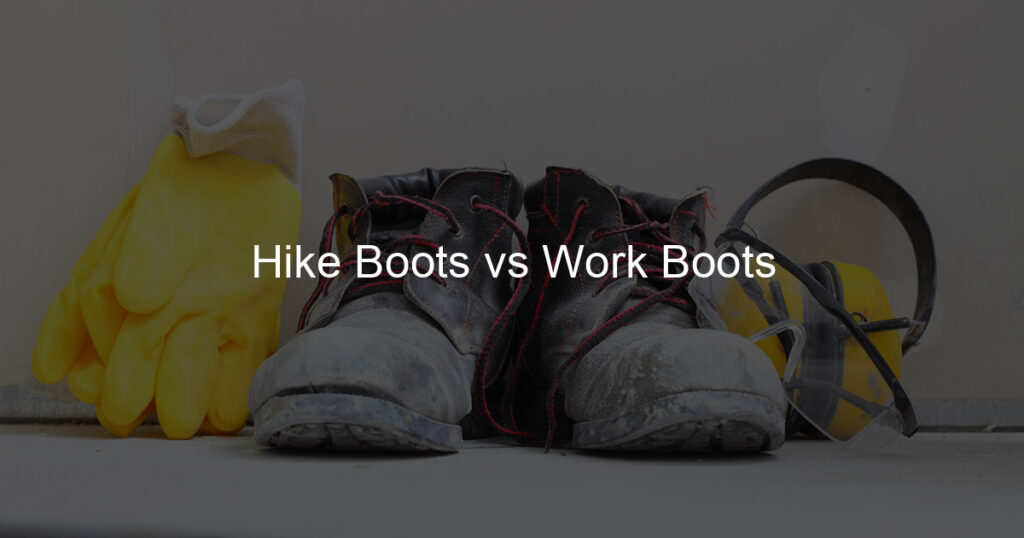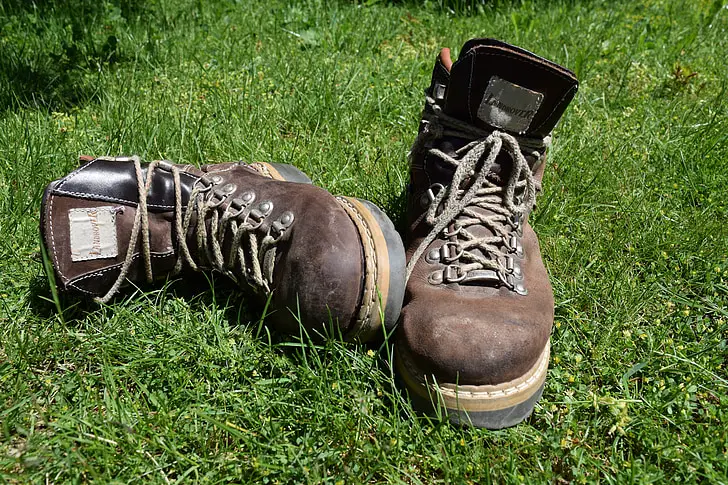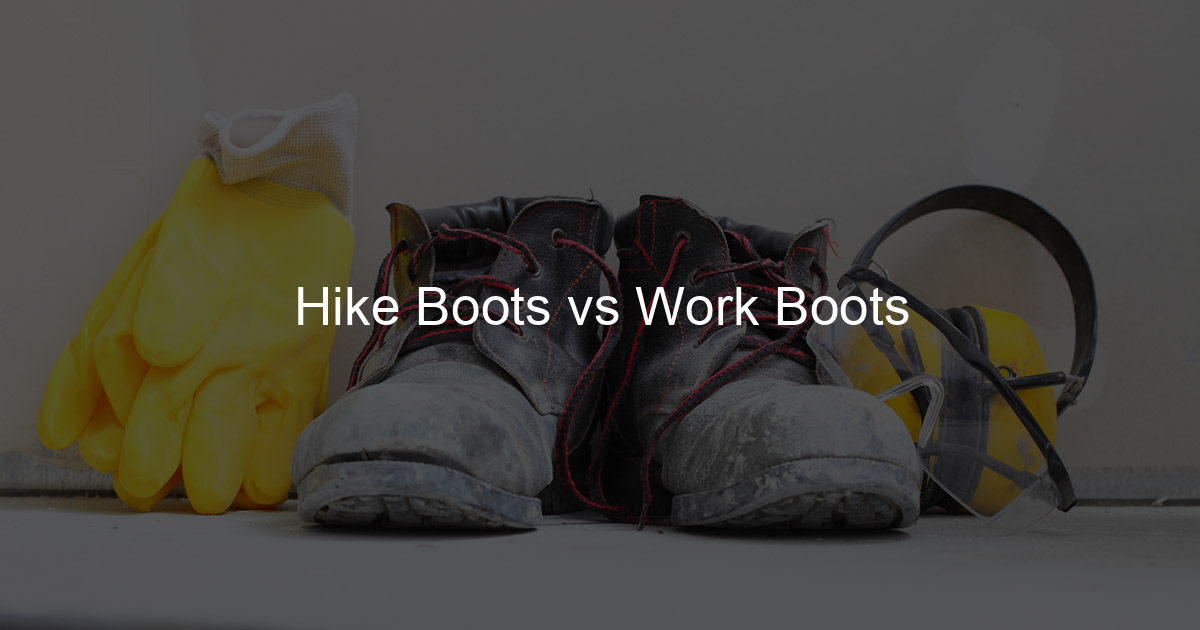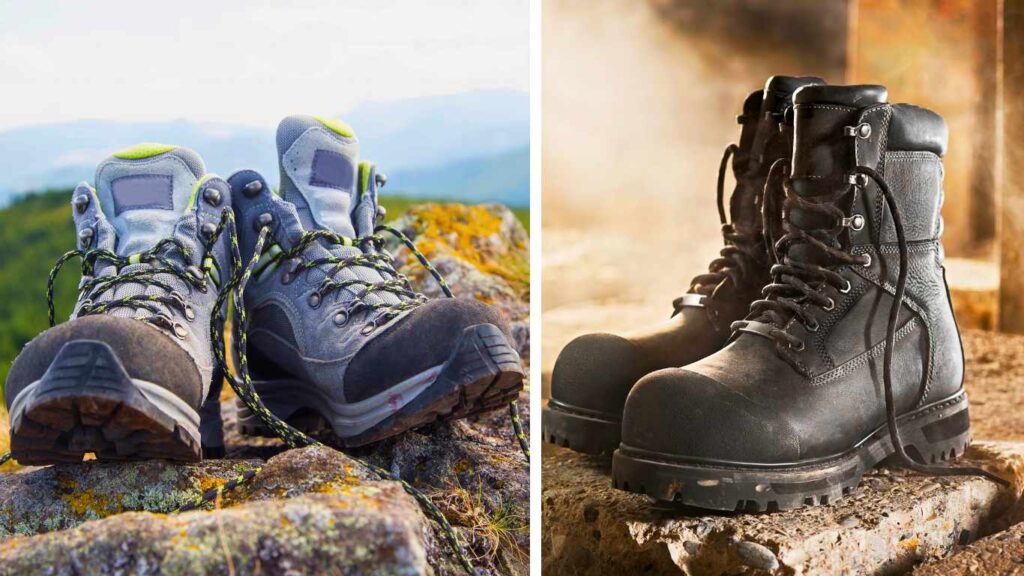Understanding the Difference Between Hiking and Work Boots
When it comes to outdoor activities, footwear plays a crucial role in ensuring comfort, safety, and performance. Two popular types of boots, hiking boots and work boots, are often confused or used interchangeably. However, these boots are designed to cater to distinct needs and activities. Hiking boots are specifically designed for outdoor enthusiasts, providing support, stability, and protection for rugged terrain and varying weather conditions. On the other hand, work boots are engineered for professionals, prioritizing durability, protection, and comfort for demanding jobs and industries. Understanding the differences between hiking boots vs work boots is essential to making an informed purchasing decision, as the wrong choice can lead to discomfort, injury, or even accidents.
How to Select the Perfect Hiking Boots for Your Trail
When it comes to choosing the ideal hiking boots, several factors come into play. The right pair should provide comfort, support, and protection for your feet, while also meeting the demands of your outdoor adventure. To make an informed decision, consider the terrain, weather, and personal comfort preferences. For instance, if you’ll be hiking in rugged, rocky terrain, look for boots with aggressive tread patterns and ankle support. If you’ll be hiking in wet conditions, waterproofing and breathability become essential features. Popular hiking boot brands like Merrell and Keen offer a range of options to suit different needs and preferences. Additionally, consider the weight, flexibility, and insulation of the boots, as well as any specific features you may require, such as crampons or gaiters. By carefully evaluating these factors, you can find the perfect hiking boots for your next adventure, ensuring a comfortable and enjoyable experience.
The Unique Demands of Work Boots: What to Look For
Work boots are designed to meet the specific demands of various industries and occupations, prioritizing durability, protection, and comfort. When selecting work boots, it’s essential to consider the unique requirements of your job or industry. For instance, construction workers may require boots with steel toes and slip-resistant soles, while warehouse workers may need boots with cushioning and arch support for long hours of standing. Additionally, work boots must meet safety standards and regulations, such as those set by OSHA or ASTM, to ensure a safe working environment. Look for boots with features like waterproofing, insulation, and breathable materials to keep feet dry and comfortable in challenging conditions. Furthermore, consider the quality of materials, stitching, and construction to ensure the boots can withstand the rigors of daily use. By understanding the unique demands of work boots, you can make an informed decision and invest in a pair that meets the specific needs of your job or industry, ultimately reducing the risk of injury and improving overall performance.
Comparing Hiking Boots vs Work Boots: Key Features and Benefits
When deciding between hiking boots and work boots, it’s essential to understand their distinct features, advantages, and disadvantages. The table below provides a side-by-side comparison of these two types of footwear:
| Feature | Hiking Boots | Work Boots |
|---|---|---|
| Design | Lightweight, breathable, and flexible | Sturdy, rugged, and protective |
| Materials | Water-resistant membranes, mesh panels | Full-grain leather, rubber toe caps |
| Functionality | Ankle support, traction, and cushioning | Slip-resistance, steel toes, and insulation |
| Weight | Lighter, typically 2-3 pounds | Heavier, typically 3-5 pounds |
| Price | $100-$300 | $150-$400 |
As shown in the table, hiking boots are designed for outdoor activities, prioritizing lightweight, breathable, and flexible designs. In contrast, work boots are built for durability and protection, featuring sturdy materials and safety features like steel toes and slip-resistance. By understanding these key differences, you can make an informed decision when choosing between hiking boots vs work boots for your specific needs and activities.
When to Choose Hiking Boots Over Work Boots
While work boots are ideal for industrial settings, hiking boots are the better choice for outdoor enthusiasts. Hiking boots are designed to provide comfort, support, and protection for your feet during extended periods of hiking, backpacking, or trail running. If you’re planning a multi-day backpacking trip, a long-distance hike, or an outdoor adventure in rugged terrain, hiking boots are the way to go.
Hiking boots offer superior ankle support, cushioning, and traction, making them perfect for navigating uneven trails, rocky terrain, and inclement weather conditions. Additionally, hiking boots are often lighter and more breathable than work boots, allowing for a more comfortable and agile hiking experience.
Some scenarios where hiking boots are the better choice include:
- Backpacking trips that require carrying heavy loads over long distances
- Long-distance hiking or trail running in rugged terrain
- Outdoor activities in wet or slippery conditions, such as hiking in rain or snow
- Scrambling or climbing in rocky or uneven terrain
In these situations, hiking boots provide the necessary support, protection, and comfort to ensure a safe and enjoyable outdoor experience. By choosing the right footwear for your specific needs, you can focus on enjoying the great outdoors without worrying about your feet.
When Work Boots Are the Better Option
In certain situations, work boots are the clear winner when it comes to footwear. If you’re working on a construction site, in a warehouse, or in a job that requires heavy lifting or hazardous materials handling, work boots are the better choice. They offer superior protection, durability, and comfort features that are specifically designed to meet the demands of industrial settings.
Work boots are built to withstand the rigors of heavy use, with features like steel toes, slip-resistant soles, and rugged materials that can withstand rough handling. They also provide essential protection from hazards like falling objects, electrical shock, and chemical spills. In industries like construction, manufacturing, and logistics, work boots are a critical component of personal protective equipment (PPE).
Some scenarios where work boots are the better choice include:
- Construction sites, where heavy lifting, falling objects, and hazardous materials are common
- Warehouses, where forklifts, pallet jacks, and other heavy equipment are used
- Jobs that require heavy lifting, bending, or kneeling, such as manufacturing or logistics
- Industries that involve hazardous materials handling, such as chemical plants or oil refineries
In these situations, work boots provide the necessary protection, support, and comfort to ensure a safe and productive work environment. By choosing the right footwear for your specific needs, you can focus on getting the job done without worrying about your feet.
When comparing hiking boots vs work boots, it’s essential to consider the unique demands of your activity or industry. While hiking boots are ideal for outdoor adventures, work boots are the better choice for industrial settings. By understanding the key differences between these two types of footwear, you can make an informed decision and invest in a pair that meets your specific needs.
Breaking Down the Cost: Hiking Boots vs Work Boots
When it comes to choosing between hiking boots and work boots, cost is an important factor to consider. While both types of footwear can be an investment, they vary significantly in terms of price points, quality, and features. Understanding the cost differences between hiking boots vs work boots can help you make an informed purchasing decision that meets your budget and needs.
Hiking boots tend to be more expensive than work boots, with high-end models ranging from $200 to $400 or more. However, these boots often feature advanced technology, premium materials, and exceptional craftsmanship, making them a worthwhile investment for serious outdoor enthusiasts. Brands like Merrell and Keen offer high-quality hiking boots with advanced features like waterproofing, insulation, and ankle support.
Work boots, on the other hand, are generally more affordable, with prices ranging from $50 to $200 or more. While they may not offer the same level of comfort and performance as hiking boots, work boots are designed to provide durability, protection, and comfort in industrial settings. Brands like Timberland and Carhartt offer high-quality work boots that meet safety standards and regulations in various industries.
When comparing the cost of hiking boots vs work boots, it’s essential to consider the following factors:
- Quality: High-quality materials, craftsmanship, and features can increase the cost of both hiking boots and work boots.
- Brand: Popular brands like Merrell, Keen, Timberland, and Carhartt often command a higher price point due to their reputation for quality and performance.
- Features: Advanced features like waterproofing, insulation, and ankle support can add to the cost of hiking boots, while safety features like steel toes and slip-resistant soles can increase the cost of work boots.
- Industry: Work boots designed for specific industries, such as construction or manufacturing, may require additional features and certifications, increasing their cost.
By understanding the cost differences between hiking boots and work boots, you can make an informed purchasing decision that meets your budget and needs. Whether you’re a serious outdoor enthusiast or a worker in an industrial setting, investing in the right footwear can provide long-term benefits and value.
Conclusion: Making the Right Choice for Your Feet
In conclusion, selecting the right footwear for your next adventure or work project is crucial for comfort, safety, and performance. By understanding the key differences between hiking boots and work boots, you can make an informed decision that meets your specific needs and activities. Whether you’re a serious outdoor enthusiast or a worker in an industrial setting, investing in the right footwear can provide long-term benefits and value.
Remember, hiking boots are designed for outdoor activities, offering advanced features like waterproofing, insulation, and ankle support. Work boots, on the other hand, are built for durability, protection, and comfort in industrial settings, meeting safety standards and regulations in various industries.
When choosing between hiking boots vs work boots, consider factors like terrain, weather, personal comfort preferences, and industry requirements. By weighing the pros and cons of each type of footwear, you can select a pair that meets your unique needs and provides the comfort, support, and protection you need to succeed.
Ultimately, the right footwear can make all the difference in your next adventure or work project. Take the time to research, compare, and invest in a pair that meets your requirements, and you’ll be well on your way to achieving your goals with confidence and comfort.









